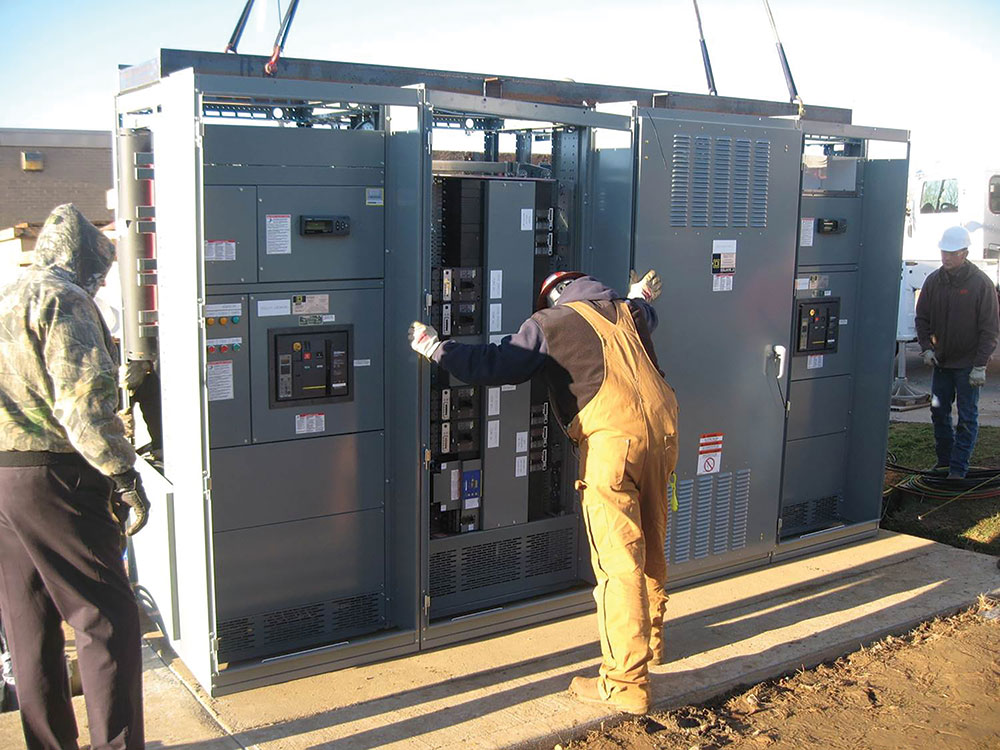Question:
My accomplices and I have made up a mock service diagram to be used in an educational program. The electrical service is rated 4000 amps at 120/208 volts. We are supplying the service equipment with 12 sets of 600 kcmil aluminum type THWN per phase.
To size the main bonding jumper according to the referenced section, the Code directs us to use 12.5% of 7200 kcmil. Thus, the main bonding jumper would be a 900 kcmil aluminum conductor (or a copper conductor with an equivalent ampacity).
So, here’s the question – Is it permissible to parallel (3) 300 kcmil aluminum conductors to achieve the required 900 kcmil requirement? Please attach a reference for the 2008 NEC edition.
Thank you.
John Hoffman, Electrical Inspector
Answer:
The requirements for the main bonding jumper are found in 250.28 for both the 2008 and the 2017 NEC. The only real difference between these Code editions is the specifying of the sizing requirements in 250.28(D)(1) of the 2008 edition which changed to reference Table 250.102(C)(1) in the 2017 edition with the applicable notes. The requirements for sizing are the same in both editions.
It should be noted that sizing the main bonding jumper is not based on ampacity but on cross-sectional area to ensure there is adequate conductor material to withstand the prospective ground-fault current for the duration that the ground fault will exist until cleared by an overcurrent device. So, in the question, the statement about sizing a copper conductor based on the equivalent ampacity for the 900 kcmil aluminum is incorrect. Per 250.28(D)(1) in the 2008 NEC, and Note 2 to Table 250.102(C)(1) in the 2017 NEC, where the main bonding jumper is a different material than the ungrounded service-entrance conductors, then the main bonding jumper is sized based on an equivalent ampacity of the service-entrance conductors of the same material as the main bonding jumper.
Section 250.28 specifies the main bonding jumper materials, construction, attachment, and sizing. Installation of the main bonding jumper within the service equipment enclosure is specified in 250.24(B). The main bonding jumper is not allowed to be spliced also from 250.24(B).
There is no prohibition from installing conductors in parallel to achieve the required cross-sectional area of the main bonding jumper. There also is no specific requirements set for paralleling conductors to act as the main bonding jumper. Therefore, since there is no prohibition or set requirements, installing 3-300 kcmil aluminum conductors in parallel to get the required 900 kcmil aluminum main bonding jumper would be permitted. It is also noted that parallel main bonding jumpers are not regulated by 310.10(H), but these would still need to be the same material, same length and terminated in the same manner to meet the requirements in 250.20(D).
Hope this response answers the question with some additional background provided.
Chuck Mello
Retired, Underwriters Laboratories
2017 NEC member of CMP-5











Find Us on Socials